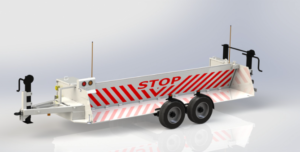All-terrain vehicles (ATVs) are an exciting means of outdoor adventure and tough terrain exploration. Knowing the essentials of ATVs may improve your ride and guarantee your safety, whether you’re a novice or an expert rider. Five key facts regarding ATVs are included in this tutorial to help you get started and keep informed. By being prepared and knowledgeable, you may minimize hazards and appropriately enjoy the beauty of nature while getting the most out of your ATV experiences.
1. Types of ATVs
ATVs are available in several varieties, each with a unique function in mind. The most popular kinds are sport ATVs, which are designed for high-speed performance and agility on trails and tracks, and utility ATVs, which are perfect for work-related duties like carrying and towing. Youth ATVs have more safety features, lower speeds, and are smaller and specifically made for kids. Your intended purpose, riding conditions, and degree of expertise will all play a role in selecting the best kind of ATV. In addition, side-by-side ATVs, sometimes referred to as UTVs (Utility Task Vehicles), are appropriate for both work and play since they can accommodate several people and frequently have extra safety measures like seat belts and roll cages.
Specialized racing ATVs provide cutting-edge suspension systems and competitive events for anyone interested in off-road racing. To improve your riding experience and fulfill your unique demands, take into account aspects like engine size, terrain adaptability, and the availability of aftermarket extras when choosing an ATV.
2. Safety Measures
On ATVs, safety is of the utmost importance. Wear the proper safety equipment at all times, such as protective gloves, long sleeves, a helmet, spectacles, and sturdy footwear. Before taking on more difficult terrain, become familiar with the ATV’s controls and get some experience riding in a safe, open place. Except in cases when the ATV is made expressly for more than one rider, never ride on paved roads or with passengers. Additionally, abide by all applicable local laws and rules when using an ATV. To gain knowledge of safe riding practices and emergency response tactics, enroll in a certified ATV safety course. To make sure your ATV is in safe working condition, regularly check it for maintenance concerns, including tire pressure, brakes, and fluid levels. Always let someone know when you plan to ride and when you anticipate returning, especially if you’re in a distant or unknown place.
3. Maintenance and Care
To guarantee your ATV’s lifetime and functionality, proper maintenance is required. Please make sure the brakes, oil levels, and tire pressure are all regularly checked to make sure they are operating properly. Regularly clean the air filter and look for wear or damage on the ATV, giving close attention to the Coolster ATV parts. Keeping your ATV clean can help avoid mechanical problems and prolong the life of important parts, especially after muddy or dusty rides. For comprehensive maintenance schedules and procedures specific to your ATV model, consult the manufacturer’s handbook. You can get dependable performance and extend the life of your ATV by being proactive with upkeep and care.
4. Environmental Responsibility
Being environmentally conscious is a necessary part of responsible ATV riding. To prevent creating erosion and harming natural ecosystems, stay on authorized pathways. Reduce your noise and stay away from vulnerable regions to show respect for the local animals and plant life. To maintain the integrity and beauty of the outdoor areas you love, take out all rubbish and abide by the “Leave No Trace” philosophy. Think about becoming a member of or contributing to ATV clubs or organizations that support conservation initiatives and safe riding behaviors. In order to give back to the community and assist in protecting off-road riding places for future generations, take part in trail maintenance and cleanup events. Teach others and yourself the value of environmental stewardship and the reduction of ATV use’s negative effects on delicate ecosystems.
5. Legal Considerations
It’s critical to comprehend the legal ramifications of ATV ownership and use. State and local laws may differ regarding minimum age requirements, registration requirements, and insurance requirements. ATV riders are required in certain locations to complete particular safety training courses. Understand the local rules in the area where you intend to ride and make sure your ATV satisfies all applicable regulations. By having this knowledge, you may ride safely and stay out of trouble with the law. Furthermore, in the event of an accident or property damage, liability insurance can be required to safeguard both you and other people. Learn all applicable land use requirements, such as the designated riding areas for ATVs and any limitations on noise or speed. To guarantee compliance and safe riding techniques, be informed about any modifications to ATV legislation and regulations.
Conclusion
ATVs are a fun way to explore the outdoors, but before you buy one, you should know about safety precautions, upkeep requirements, environmental duties, and legal issues. You may properly and securely enjoy your ATV trips if you grasp these important concepts. To ensure that you and other people have a great time on your ATV excursions, always put safety and consideration for the environment first.


